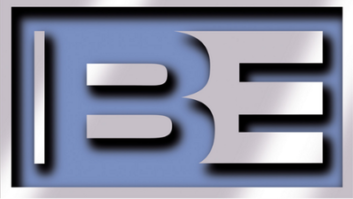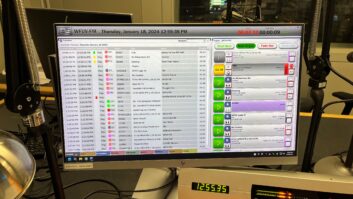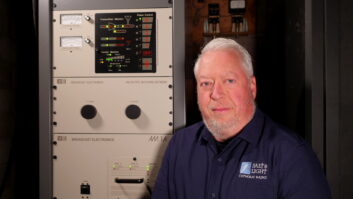CODY, Wyo. Legend Communications purchased a new Broadcast Electronics (BE) FM 25T transmitter for KGWY(FM) in March 2006. It was a replacement for an old BE FM 30 (not even an A model) that had stood on the floor for more than 25 years.
Prior to Legend buying the station, the transmitter had received little or no maintenance and the few that had poked around in it did more damage than good. So it was time to retire the old gal, and we wanted a replacement that would also stand the test of time.

KGWY’s transmitter site — isolated locations such as this require reliability. We knew BE transmitters were reliable because in addition to the FM 30, we also have a BE FM 30A that is sitting on a lonely mountaintop in the Bighorn Mountain range in north central Wyoming. At an altitude of 10,000 feet, the site can be a real challenge to access at certain times of the year, so transmitter dependability is a must.
Some winters we’ll go four or five months without so much as changing a filter. Power outages can drag on for days up there, allowing building temps to plummet into the sub-zero range. Yet, when the power finally comes back on, that little transmitter purrs back to life without missing a beat.
It still boggles my mind that it continues to come back to life, but year after year that little transmitter chugs along in that brutal environment.
Two other good reasons we went with BE were timing and price. BE had our new FM 25 T transmitter on site in three weeks and at a very reasonable price.
Installation was a breeze. We had the transmitter wired and plumbed before the electrician finished rerunning the primary feeds. The initial power-up sequence went smoothly — everything right where factory specs called for. And that’s pretty much where it’s been since.
Stability
We did finally have a tube wear out after a little over two years, but when we swapped it out for a new rebuilt one, there was very little tuning that needed to be done. That’s one of the great things about BE transmitters; they’re stable. That might be an understatement — more like rock solid.
If you’re constantly tuning on a BE transmitter it’s probably because of one of two reasons: Either you have a load problem or you’re a “tinkerer,” in which case my advice would be to put your hands in your pockets and let the transmitter run.
Metering in the BE T Series transmitter is all nice big analog meters that are well laid out, allowing the engineer to meter lots of parameters, on the rare occasion that you do need to tune one up. The new IPAs are the latest MOSFET technology and have been no trouble. The transmitter comes standard with disposable air filters. I know this seems like a small thing, but some of “the other guys” insist on putting washable air filters in all of their transmitters. In the 25 years I’ve been in broadcasting I have never been to an FM transmitter site that had running water.
Another really nice thing that might not seem like a big deal is just how quiet these transmitters run. That big blower motor really does run quiet with BE’s “high volume, low pressure” scheme. It’s sure nice to be able to hear your cell phone ring while you’re on site, and more importantly, not have to step outside to talk, especially when it’s 20 below out.
The inside of the cabinets themselves is incredibly spacious. Lots of room to move around and everything is marked clearly. BE redesigned the grid circuit of the newer models of transmitters, which should further stabilize the final amplifier. The PA input now just has a single adjustment making PA tuning that much easier.
The one thing I might change in the design of the BE transmitters is that I’d like to see metering of screen volts available on the remote controls. It’s kind of nice to know just how hard a transmitter is running the tube to make power, especially when the site is a remote site. I’ve modified my FM-30A by tapping a metering circuit designed for the optional computer interface, which works quite well, but it took a little experimenting to get it just right. Now I have a high limit alarm set on my remote control that alerts me if the transmitter is cranking up screen voltage to make power.
I really can’t say enough good things about the BE T Series transmitters. I also run several of BE’s AM transmitters (BE AM 1A models), which are pretty much plug-and-play transmitters. I’ve never had a problem with them either, as long as the load is correct. Broadcast Electronics continues to design and build transmitters for the real world and as long as they do I’ll continue to buy them.
The author is director of engineering for Legend Communications of Wyoming.
For information, contact Broadcast Electronics at (217) 224-9600 or visitwww.bdcast.com.











